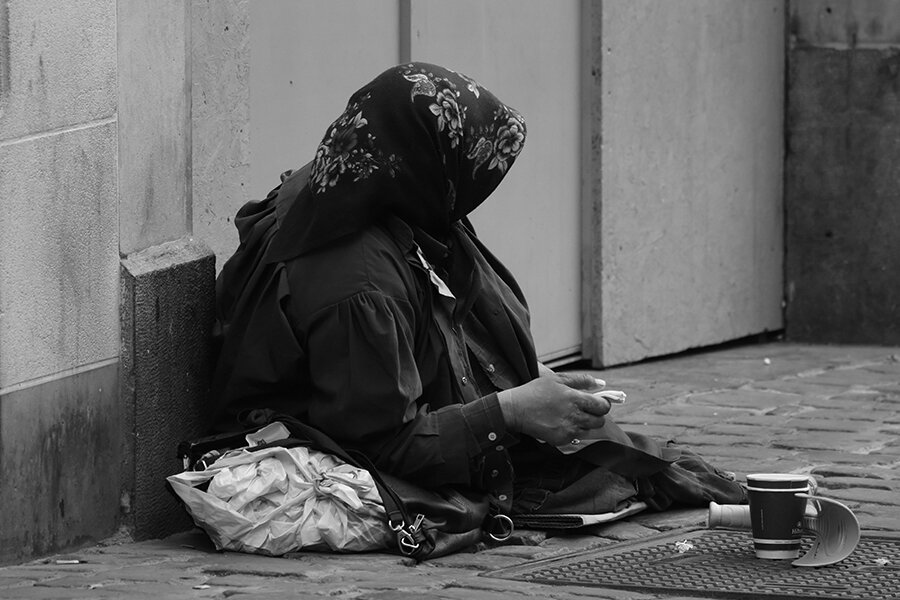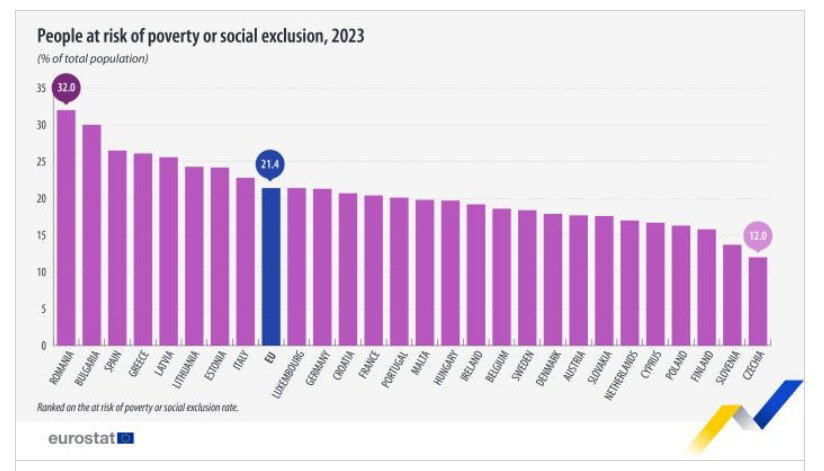читайте также
 Ten Years to a Passport: New Citizenship Rules in Portugal
Ten Years to a Passport: New Citizenship Rules in Portugal
 Top 25 World Economies 2025: Who Shapes Global Growth
Top 25 World Economies 2025: Who Shapes Global Growth
 “Season of Strict Rules”: How Cities Around the World Are Tightening Short-Term Rental Laws — And What It Means for Guests, Hosts, and Investors
“Season of Strict Rules”: How Cities Around the World Are Tightening Short-Term Rental Laws — And What It Means for Guests, Hosts, and Investors
 Turkey to Double the Tax Burden on Landlords
Turkey to Double the Tax Burden on Landlords
 Europe Calls — and Pickpockets Answer: Where Tourists Face the Greatest Risks in 2025 and How Not to Become a Victim
Europe Calls — and Pickpockets Answer: Where Tourists Face the Greatest Risks in 2025 and How Not to Become a Victim
 Thailand to Deport Russians and Crack Down on Visa Runners
Thailand to Deport Russians and Crack Down on Visa Runners
Poverty Risk in the EU: Where Life Is the Hardest

Eurostat reports that in 2023, 16.2% of the population in the European Union—approximately 71.7 million people—were at risk of poverty. The study covered 240 regions across the EU and revealed significant disparities in income and living standards not only between countries but also within them.
Relative Measure of Poverty
The study used a relative indicator: a person is considered at risk of poverty if their disposable income is below 60% of the national median. This doesn’t refer to poverty in a basic physiological sense but rather to social vulnerability compared to the country’s average standard of living.
Top Regions by Poverty Risk
According to Eurostat, in 10 EU regions, over 30% of the population were at risk of poverty. The highest rate was observed in French Guiana (53%), an overseas territory of France. Calabria in southern Italy ranked second (40.6%), followed by Sicily (38%). These regions face chronic unemployment, emigration of the working-age population, and limited access to quality social services.
High poverty risk levels were also recorded in Melilla (33.9%) and Ceuta (33.6%)—two Spanish enclaves in North Africa. Bulgaria’s North-Western (33.1%) and North-Central (32.1%) regions also made the top 10, highlighting persistent economic gaps between capital areas and the periphery. Eastern Macedonia and Thrace in Greece (31.4%) rounded out the list.
Regions with Lowest Poverty Risk
On the other end of the spectrum are the EU regions with the lowest poverty risk. Bucharest-Ilfov in Romania, which includes the capital and its suburbs, reported the lowest rate—just 2.1%. Other well-off regions include Bolzano/Bozen in Italy (3.1%) and East Flanders in Belgium (5.4%). These regions combine high employment, diversified economies, and developed infrastructure to ensure more stable household incomes.
In total, 26 EU regions had poverty risk rates below 10%, reflecting strong income equality and redistribution-oriented social policies. These regions are primarily concentrated in Austria, Slovenia, Finland, the Czech Republic, and Sweden.

Poverty and Social Exclusion
A broader measure includes not only income levels but also material deprivation and labor market inactivity. According to Eurostat, in 2023, 94.6 million people (21.4% of the population) were at risk of poverty or social exclusion.
The most vulnerable groups were women (22.4% compared to 20.3% of men), youth aged 18–24 (26.1%), individuals with low education levels (34.5%), and the unemployed (66.3%). By country, the highest risk rates were recorded in Romania (32%), Bulgaria (30%), Spain (27%), and Greece (26%). The lowest rates were found in the Czech Republic (12%), Slovenia (14%), Finland, and Poland (both 16%).
These figures underscore the complexity of poverty in the EU and the need for cross-sectoral policy approaches.

Methodology and Social Disparities
Eurostat calculated the poverty threshold separately for each country, based on national median incomes. This method enables better internal comparisons but makes cross-country comparisons more difficult. For instance, the same income could classify a person as poor in one country but not in another due to differences in living costs and wages.
Nonetheless, this approach more accurately reflects internal EU inequalities. It highlights that even in economically developed countries, specific regions may suffer from chronic poverty and underinvestment. Southern Italy, north-eastern Bulgaria, Spanish enclaves, and parts of eastern Greece remain “weak links” in the EU's social cohesion.
Demographics and Resource Distribution
The results also reflect demographic trends. Many vulnerable regions face youth outmigration, exacerbating aging and labor shortages. Meanwhile, capitals and economic hubs concentrate resources and show steady growth.
In the long run, Eurostat data could influence the allocation of EU funds and shape regional development policies. Supporting high-poverty regions will be key to strengthening EU social unity. For Eastern and Southern European countries, this presents both challenges and opportunities for investment, reform, and reducing inequality.
Expert Insights
Additional expert perspectives confirm the multifaceted nature of poverty in the EU. The European Anti-Poverty Network emphasized that children, youth, and those with low education remain particularly vulnerable. The organization calls poverty a “social trap” worsened by poor access to culture, education, and employment.
The Financial Times quotes Capital Finance Strategies analyst George Lemos, who notes that in Greece, despite GDP recovery, over a quarter of the population remains in poverty and social isolation—undermining macroeconomic trust and requiring targeted social policies.
Social Justice Ireland draws attention to rising poverty among the elderly, especially women. More than 17% of those over 65 are at risk, driven by pension gender gaps and unstable female employment histories.
Meanwhile, Czech expert Radek Hábl from the Institute for Debt Prevention and Resolution points out that even in countries with low official poverty, high debt burdens persist. Financial illiteracy and territorial inequality are key vulnerabilities even in relatively prosperous nations.
These perspectives underline that fighting poverty in the EU requires not only resource redistribution but systemic support for vulnerable groups—through education, service access, and reducing regional inequality.





